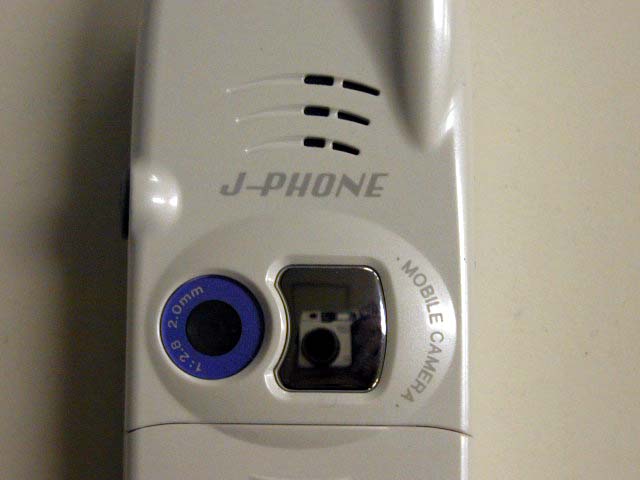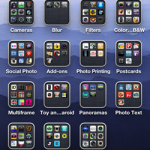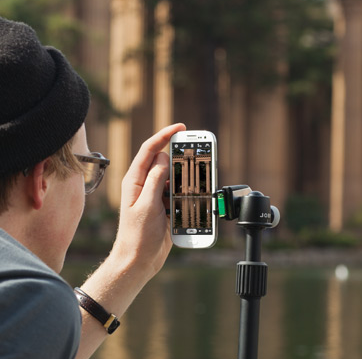
Ten years ago Evan Nisselson wrote a short illustrated article on his blog entitled, ‘Why will wireless camera phones revolutionize the photography industry?’[1] In the article he says that mobile phone photography offers a totally different mindset, with an inbuilt communicative function of immediate sharing. It reduces the amount of equipment you need to carry around for equivalent image quality and will enable photographers to generate useful revenue streams.
Well it has taken a while, but a lot of what Nisselson said at the time has particular resonance now, for there comes a time in every product life cycle when its demise is clearly written on the wall, or as in this case, snapped!
This was the situation for traditional cameras in 2012. Of course compact cameras and single lens reflex cameras (SLRs) are not going to disappear overnight but, sooner than later, and at an ever-accelerating pace, they will go the way of fixed phones, watches, alarm clocks and calculators, all replaced by the mobile phone.
How can we be so sure ? Well first of all there were, through the course of the year significant events that brought mobile phone photography to the fore.
- Prize winning photography and prize winning photographers were using mobile phones
- The improved quality of camera phones and the availability of applications and platforms raised mobile photography to acceptable levels
- There was an explosion of business activity around mobile phone photography
Mobile photography becomes professional
Flickr the well known photo-sharing site used by both professionals and amateurs, publishes details about which cameras upload to their site. Although not representative globally, it does provide a snapshot (sorry!) of how Flikr’s photos are being snapped. In the top twenty this year it is clear that mobile phones are making serious inroads. Alongside the Canons and Nikons (N° 1 and 2) we find Apple at 3, Samsung at 7, HTC at 9, Nokia at 11, Motorola at 13, Blackberry at 14, and Sony Ericsson at 18.

Flickr also admits that camera phones “are under-represented” in their table because the uploads are not always accompanied by the necessary exif data.
That mobile phones should be responsible for shrinkage in the compact camera market is understandable, 15% down in 2011, and despite good sales, down 12% in 2012. What is less appreciated is the explosion there has been in what is called the connected camera market and it is of course here that the mobile phone excels. Although a number of more traditional cameras now come with Wi-Fi and GPS, for any Smart phone, such features are a given. And if you combine that with an operating interface that is geared to apps and sharing you have a connected camera par excellence. A fact not lost on traditional camera companies like Polaroid, (yes it still exists) and Nikon who both launched cameras with an Android interface in 2012, nor on Samsung, one of the few companies to already have an established reputation in both the mobile phone and camera sectors and whose first Android based compact camera, the Samsung Galaxy Camera, launched at the end of 2012.
The increase in connectivity has been matched by a number of professional photographers both in the realm of photojournalism and in the different field of art photography, who have switched from traditional SLR or compact cameras to mobile telephones. To quote Anton Kawasaki from his mobile review of 2012, mobile photography has gone “mainstream”. Mobile phone photographs made the cover of Time magazine, while mobile phone photographic artwork featured in prestigious Fine Art galleries around the world and began to sell for serious money. As award winning photographer Ben Lowy says on his blog
“I have worked with bulky digital cameras, always mindful of the technical manoeuvres from setting the shutter speed and aperture to editing and toning on a computer screen. In the last few years I have discovered that my iPhone has allowed me to capture scenes without feeling that I am once again on the job. To “point and shoot” has been a liberating experience. It has allowed me to rediscover the excitement of seeing imperfections and happy accidents rendered through the lens of my hand-held device. « [2]
Mobile phones now take acceptable pictures
Of course mobile phone manufacturers have not been idle either. Two to three years ago the typical camera phone was not really as good as a bottom of the range compact camera. It is a different story now. Improvements in lenses, apertures, flash, and sensors means that at usual screen resolutions and sizes, it has become impossible to distinguish a mobile image from any other type of image capture. With increased miniaturisation and improved components many smart phones do an excellent job at capturing well-lit scenes. Apple and HTC particularly have worked hard in this area although not quite as much as Nokia whose 808 PureView has a 41 megapixel 1/1.2″ sensor and a high resolution f/2.4 Zeiss all-aspherical 1-group lens. However exaggerated this may seem to some, it does demonstrate a quality what will become almost commonplace within a couple of years.
The Appfest explosion

While improved capture is important to explain the growth of mobile phone photography it is only part of the story. This is because, equally if not more important, has been the explosion of image processing and photo-sharing applications created for smart phone users. A simple search for photo or camera Apps on either iTunes or Android Play will reveal thousands of them, each one vying for more ‘exposure’. Whole websites like iphoneography.com have grown up to curate them. Some are simply stupid like camera flash (for phones without flash) while others like are incredibly sophisticated like the Canon DSLR controller which will let you control your traditional reflex camera from your mobile phone. Perhaps it was even because of the poor quality of early images that mucking around with the pixels and adding filters became so popular. In any case the desire for camera Apps from smart phone users in order to manipulate and tag the basic images did not go unnoticed either by the manufacturers or the application developers. Mobile phone cameras improved and applications blossomed as smart phone market share became significant in at the end of the decade.
All the same, many observers were surprised by the extraordinary growth of Instagram. Launched in October 2010, Instagram had more than a million users by December, by September the following year 10 million, and by April 2012 a staggering 30 million. Even so the purchase of Instagram by Facebook for 1 billion dollars, ( $715M in cash plus stock) finalised in September last year, astonished many and certainly dwarfed Yahoo’s $35 million purchase of Flikr in 2005. The irony is, that Instagram’s particularity is the square shaped image that it creates, with many ‘nostalgic’ filters that mimic the very first instant photo-taking and sharing device, the Polaroid camera. There is even talk of an Instagram/Polaroid camera venture!

It remains to be seen how Facebook intend to monetise their investment without alienating too many Instagram users, and they need to be careful. Mobile photographers are just as picky as their SLR colleagues and there is no shortage of competitors out there; Flikr, PicYou, SnapSeed, Eye’Em, Hipstamatic to name but a few. Each one offering varying types of image filters, social network sharing and image hosting services. There might also be room for all of them, as many mobile phone photographers have downloaded dozens of apps to their phones.
So Mopho is now mainstream. Our society, our world, is being captured visually in an unparalleled way. With as many cameras as people the mobile phone has become the most important witness to our digital lives… next stop video?
